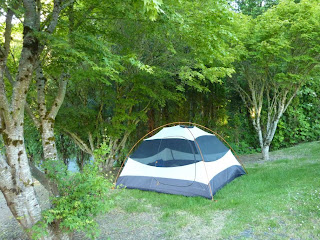Sightseeing day: Mt. St. Helens
Night Accommodations: Mt. St. Helens RV Park in Castle Rock, WA
This summer marks the 30th anniversary of the last eruption from Mt. St. Helens. Upon hearing this factoid, I thought Only? and Cindy thought Already?! It was fascinating learning about the progression of seismic activity leading up to the May 18th eruption. The final lateral blast of the eruption from the northern flank spewed pumice, ash, and debris into the air as far as Puget Sound and eventually the entire world. That's pretty amazing given the size of Mt. St. Helens.
This is where I geek out. Feel free to skip ahead, or risk learning something.
The eruption created various zones of destruction. The trees closest to the volcano were split open, ripped from the ground, and carried further down the mountain into lakes and roads. There are places along the volcano where you can still see that all of the tree trunks are facing away from the blast.
The projectile material from the northern flank was accompanied by a powerful heat blast, which scorched trees in the surrounding area. The sonic blast from the eruption powered down the peak, creating a giant tidal wave through Spirit Lake. When the tidal wave fell back into the lake, it brought with it entire trees that completely filled in the body of the lake. The eruption totally reshaped the surrounding area and even created two beautiful lakes.

What does Matthew most remember from visiting this epic active volcano? It was cold. There were clouds. And there were crazy chipmunks that were not afraid of people.





No comments:
Post a Comment